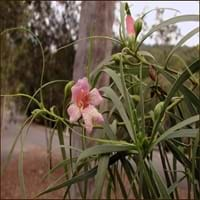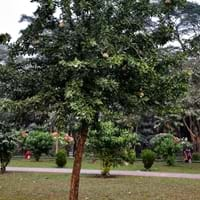Life Span
Perennial
Perennial
Origin
Hybrid origin
Bangladesh, India, Pakistan, Sri Lanka, Tropical Indomalaya
Types
Pixie Bush, Claypan Grass
Not Available
Habitat
Desert, Dry areas
Dry areas
USDA Hardiness Zone
9-11
Not Available
AHS Heat Zone
12-9
Not Available
Sunset Zone
8, 9, 13, 14, 15, 16, 17, 18, 19, 20, 21, 22, 23, 24
Not Available
Habit
Upright/Erect
Not Available
Flower Color
Magenta, Rose
White
Flower Color Modifier
Not Available
Not Available
Fruit Color
Light Pink
Greyish Brown, Light Green, Not Available
Leaf Color in Spring
Purple, Light Green, Gray Green
Green
Leaf Color in Summer
Purple, Olive, Gray Green
Dark Green
Leaf Color in Fall
Purple, Olive, Gray Green
Green
Leaf Color in Winter
Purple, Olive, Gray Green
Gray Green
Leaf Shape
Irregular
Ovate
Plant Season
Spring, Summer, Fall, Winter
Autumn
Sunlight
Full Sun, Partial Sun
Full Sun, Partial Sun
Growth Rate
Medium
Medium
Type of Soil
Loam, Sand
Rich
The pH of Soil
Acidic, Neutral, Alkaline
Acidic, Neutral
Soil Drainage
Well drained
Well drained
Bloom Time
Early Spring, Spring, Late Winter
Late Fall
Tolerances
Cold climate, Light Frost, Pollution
Drought
Where to Plant?
Ground, Pot
Ground, Pot
How to Plant?
Grafting, Seedlings, Stem Planting
Budding, Layering, root cutting, Seedlings
Plant Maintenance
Medium
Low
Watering Requirements
Average Water Needs, Never Over-water, Requires watering in the growing season, Water when top layer of soil becomes dry
Do not water excessively
In Summer
Lots of watering
Lots of watering
In Spring
Average Water
Moderate
In Winter
Average Water
Average Water
Soil pH
Acidic, Neutral, Alkaline
Acidic, Neutral
Soil Type
Loam, Sand
Rich
Soil Drainage Capacity
Well drained
Well drained
Sun Exposure
Full Sun, Partial Sun
Full Sun, Partial Sun
Pruning
Prune to stimulate growth, Remove damaged leaves, Remove dead leaves, Remove dead or diseased plant parts
Prune after harvesting, Remove dead or diseased plant parts
Fertilizers
All-Purpose Liquid Fertilizer, fertilize in spring, Nitrogen, Phosphorous
for fruiting plants, use high phosphorous content fertilizer
Pests and Diseases
Insects, Red blotch
Not Available
Plant Tolerance
Cold climate, Light Frost, Pollution
Drought
Flower Petal Number
Single
Single
Foliage Texture
Fine
Medium
Foliage Sheen
Matte
Matte
Attracts
Birds, Hummingbirds
Not Available
Allergy
Skin irritation, Skin rash
Gastric
Aesthetic Uses
Beautification, Landscape Designing, Showy Purposes
Not Used For Aesthetic Purpose
Beauty Benefits
Good for skin and hair, Improve hair condition, Improve skin condition
Good Cleanser
Environmental Uses
Air purification, Food for insects, Prevent Soil Erosion, Versatility
Not Available
Medicinal Uses
No Medicinal Use
Blood cleanser, Diabetes, Ear ache, Energy, Kidney problems, Liver Protection, Malaria, Respiratory Disorders, scurvy, Snakebite
Part of Plant Used
Flowers, Leaves
Fruits
Other Uses
Decoration Purposes, Showy Purposes, Used as Ornamental plant, Used for its medicinal properties
Used As Food, Used for its medicinal properties
Used As Indoor Plant
Yes
No
Used As Outdoor Plant
Yes
Yes
Garden Design
Container, Feature Plant, Foundation, Groundcover, Hedges, Mixed Border, Rock Garden, Wall, Screening, Wind Break, Tropical
Edible, Fruit Tree
Botanical Name
EREMOPHILA 'Valentine'
Limonia acidissima
Common Name
Poverty Bush, Fuchsia bush
Wood apple, monkey fruit, curd fruit
In German
Emu Bush
Indischer Holzapfel
In French
Emu Bush
Kawista
In Spanish
Emu Bush
Kawista
In Greek
emu Μπους
γλυκό ασβέστη
In Portuguese
Emu de Bush
Limonia
In Polish
Emu Bush
Feronia słoniowa
In Latin
Emu Bush
dulcis ad cinerem
Phylum
Tracheophyta
Magnoliophyta
Class
Magnoliopsida
Magnoliopsida
Order
Lamiales
Sapindales
Family
Myoporaceae
Rutaceae
Clade
Angiosperms, Asterids, Eudicots
Angiosperms, Eudicots
Subfamily
Not Available
Aurantioideae
Season and Care of Emu Bush and Wood Apple
Season and care of Emu Bush and Wood Apple is important to know. While considering everything about Emu Bush and Wood Apple Care, growing season is an essential factor. Emu Bush season is Spring, Summer, Fall and Winter and Wood Apple season is Spring, Summer, Fall and Winter. The type of soil for Emu Bush is Loam, Sand and for Wood Apple is Rich while the PH of soil for Emu Bush is Acidic, Neutral, Alkaline and for Wood Apple is Acidic, Neutral.
Emu Bush and Wood Apple Physical Information
Emu Bush and Wood Apple physical information is very important for comparison. Emu Bush height is 180.00 cm and width 90.00 cm whereas Wood Apple height is 800.00 cm and width 900.00 cm. The color specification of Emu Bush and Wood Apple are as follows:
Emu Bush flower color: Magenta and Rose
Emu Bush leaf color: Purple, Light Green and Gray Green
Wood Apple flower color: White
- Wood Apple leaf color: Green
Care of Emu Bush and Wood Apple
Care of Emu Bush and Wood Apple include pruning, fertilizers, watering etc. Emu Bush pruning is done Prune to stimulate growth, Remove damaged leaves, Remove dead leaves and Remove dead or diseased plant parts and Wood Apple pruning is done Prune after harvesting and Remove dead or diseased plant parts. In summer Emu Bush needs Lots of watering and in winter, it needs Average Water. Whereas, in summer Wood Apple needs Lots of watering and in winter, it needs Average Water.





